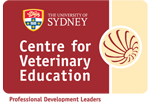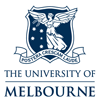The most common complication that we see with both types of enucleation from general practice and within our practice include draining fistulas – usually from the medial canthus, infection, contralateral eye blindness in cats and horses and orbital emphysema.
Infection: can be easily avoided and controlled with proper usage of antibiotics preoperatively and in some cases postoperatively. Antibiotics with an anaerobic spectrum are a good choice for enucleation. Amoxycillin with clavulanic acid should be sufficient to cover the most common type of pathogens found in the obrit. Proper preparation of the surgical site including clipping of the hair around the eye, proper antispesis, gentle tissue handling, good haemostasis and correct tissue apposition should reduce the number of pathogens introduced into the eye and mineral colonization of the surgical sites. Careful closure of the tissues minimizes dead space and reduces the chance of blood pooling post-operatively.
Hemorrhage: of the surgical site can be avoided by proper haemostasis. For most small animals it is not necessary to tie off the artery and vein of the orbital cone. Temporarily pressure haemostasis usually can control the hemorrhage. Blunt dissection of soft tissues and transaction of muscles close to the scleral insertion site should minimize haemorrhage.
Tearing the Optic Chiasm: Gentle and proper tissue handling especially when transecting the optic nerve is required. This is especially important in the feline patient. Proper sharp and blunt dissection of the subcutaneous tissues, muscles, soft tissues, sclera and minimal traction is applied when exteriorizing globe from the socket. Care must be taken especially in cats and horses not to pull on the globe when enucleating it. This can tear the optic chiasm, meaning the patient wakes up blind in its remaining eye. Glaucomatous feline globes are difficult to remove, and are the usual cause of tearing the optic chiasm. It may be necessary to collapse the eye prior to surgery, or improve exposure with a lateral canthotomy, so as to reduce the tension on the optic nerve.
Drainage fistula: can be easily avoided by removing the medial caruncle, and then carefully closing the medial canthus. Most of the draining fistulaes that we see are due to failure to excise all of the skin from the medial canthus. Remember that the skin is tightly adherent to the medial nasal tissues.
Discharge: Post operative seepage of small amount of blood and serum and swelling of the orbit can be seen after the surgery. Remember to warn the owners that bloody discharge may be seen coming from the nose, as the blood from the socket can drain down the nasolacrimal duct. A cold compress and bandage should reduce the amount of haemorrhage. Orbital swelling can be reduced with a warm compress for a few days after the surgery. Preoperative use of systemic anti-inflammatories provided the patient ahs normal renal function and is well hydrated will help reduce the post –operative swelling.
Orbital Emphysema: this is an unusual complication and may be seen in brachycephalics. As they can have negative airway pressure air can be sucked up from the nose into the orbit. This does not seem to cause any problems for the patient.


